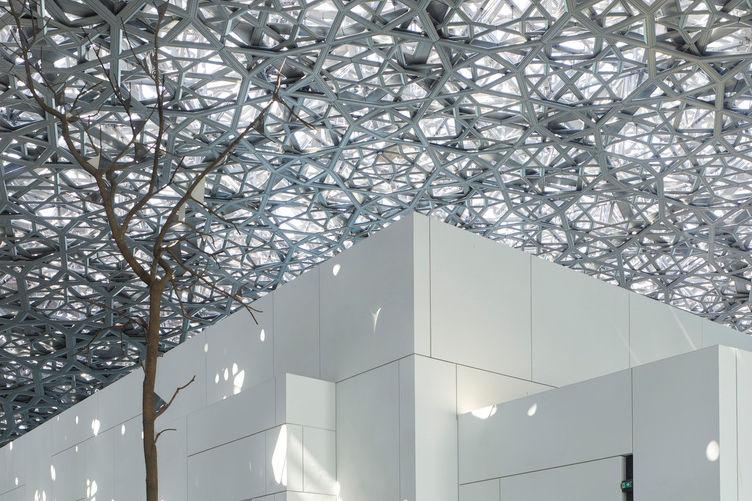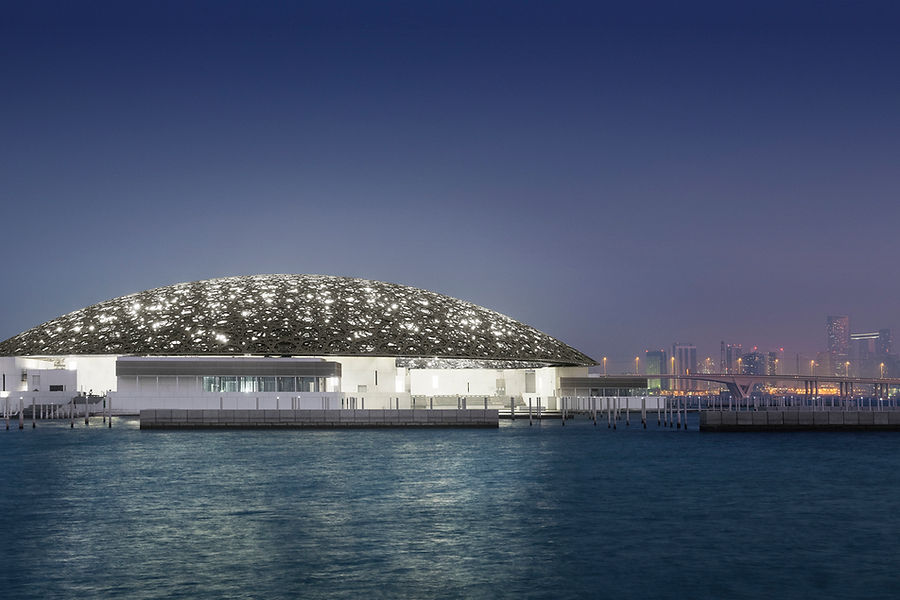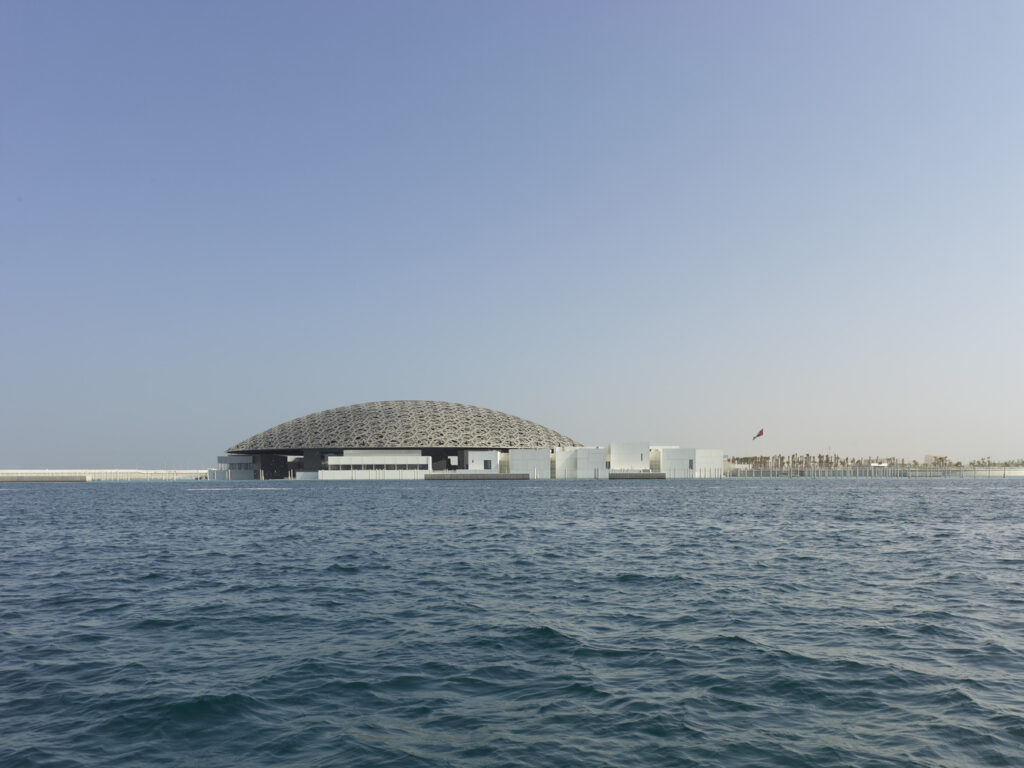Louvre Abu Dhabi
Type
Museum
Year
2017
Architect
Ateliers Jean Nouvel
Location
Abu Dhabi, UAE
The Louvre Abu Dhabi, designed by the renowned architect Jean Nouvel, is an extraordinary example of modern architecture that merges innovative design with traditional Arabic elements. Opened in 2017, this monumental museum is located on Saadiyat Island in Abu Dhabi, United Arab Emirates, and spans a staggering 97,000 square meters. The design concept of the Louvre Abu Dhabi is both ambitious and symbolic, representing a ‘museum city’ on the sea, comprised of 55 white structures clustered under a vast, latticed dome.
The architectural centerpiece of the Louvre Abu Dhabi is its stunning dome, an engineering marvel that appears to float effortlessly above the museum complex. Known as the ‘rain of light,’ the dome is a geometric lacework made of intricate star-shaped patterns inspired by traditional Islamic architecture. The structure is composed of eight layers of aluminum and stainless steel, creating a captivating effect as sunlight filters through, casting a mesmerizing play of light and shadow on the ground below. This interplay not only enhances the visual experience but also evokes the serene ambiance of an Arabian oasis, where light and shade create a sense of calm and reflection.

ean Nouvel’s vision for the Louvre Abu Dhabi was to create a space that bridges cultures and epochs, reflecting the UAE’s position as a crossroads of civilizations. The museum’s galleries, encased within the white buildings beneath the dome, house a diverse collection of artworks and artifacts from around the world, spanning prehistoric times to the contemporary era. This universal approach to curation aligns with the museum’s mission to foster a spirit of openness and cultural exchange, offering visitors a journey through humanity’s artistic achievements.
The location of the Louvre Abu Dhabi on Saadiyat Island further enhances its unique appeal. Surrounded by the azure waters of the Persian Gulf, the museum’s design integrates seamlessly with its maritime environment. The surrounding water not only cools the area naturally but also reflects the dome, enhancing the illusion of the museum floating on the sea. This connection to water is deeply rooted in Arabic culture, symbolizing life and purity, and adding another layer of meaning to the architectural design.
One of the most striking aspects of the Louvre Abu Dhabi is its innovative use of space and light. The museum’s layout is designed to guide visitors through a series of interconnected galleries and outdoor spaces, creating a sense of exploration and discovery. The outdoor plazas and courtyards provide tranquil spots for contemplation, while the art installations and sculptures placed throughout the museum grounds enhance the overall experience. The careful orchestration of light and space not only highlights the artworks but also creates an immersive environment that encourages reflection and inspiration.

The Louvre Abu Dhabi stands as a testament to the UAE’s commitment to cultural development and international collaboration. By partnering with France and the Louvre Museum in Paris, Abu Dhabi has created a world-class institution that celebrates global heritage while honoring local traditions. The museum’s dynamic programming, which includes temporary exhibitions, educational workshops, and cultural events, ensures that it remains a vibrant and engaging destination for visitors of all ages and backgrounds.
In conclusion, the Louvre Abu Dhabi is more than just a museum; it is a cultural landmark that embodies the spirit of innovation, collaboration, and inclusivity. Its groundbreaking design by Jean Nouvel, combined with its rich collection and strategic location, makes it a beacon of artistic and architectural excellence. The museum not only preserves and showcases humanity’s shared heritage but also fosters a deeper understanding and appreciation of the diverse cultures that shape our world.


Recent Posts
15 Floor Plan Graphic Styles That Will Elevate Your Presentation Game
The Role of Shadows in Architectural Storytelling
When Furniture Becomes Architecture: Blurring the Line